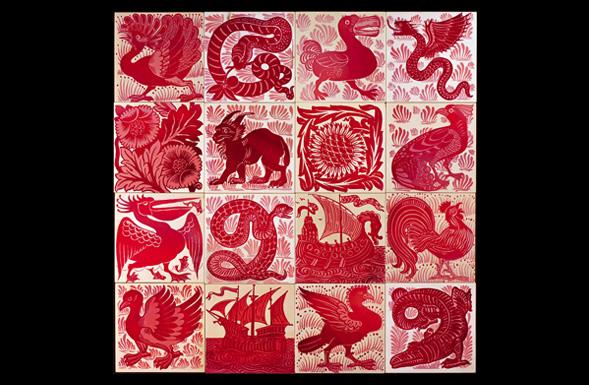

Ruby Lustre Animal Tiles
De Ferranti's Arts and Crafts style ruby lustre animal tiles are replicas of William de Morgan's decorative tiles.
The animal images were all de Morgan's own design, partly inspired by medieval manuscripts and partly from his own imagination, whereas the flower designs he would have copied from Arts and Crafts designer William Morris.
The lustre technique was widely used in Islamic pottery and reinvented for ceramic tiles by de Morgan. The lustres have a shimmering iridescent, metallic surface.
Product Specifications:
Length: 6
Thickness: 1/4
Width: 6
Finishes: Glazed, Handpainted
Product Applications:
Bathrooms
Fireplace surround
Internal use
Kitchens
Residential
Tile
Walling
More about William de Morgan:
William De Morgan was probably the most important and innovative potter of the 19th century and, with his friend William Morris, was a leading figure in the Arts and Crafts Movement.
He was born in Chester on November 16, 1839.
Having studied study fine arts, de Morgan then turned to stained glass and then involved in pottery, however by 1872 he had shifted his entire interest to ceramics.
He set up a pottery works in Chelsea where he stayed until 1881. This was his most prolific period as an artistic potter. He experimented with different lustres and glazes being heavily influenced by Persian and Moresque designs and rediscovered methods of making the intense greens and blues used in Majolica wares.
There is a permanent exhibition of his work in the De Morgan Centre, south west London. Collections of his work also exist in many museums, including the Victoria and Albert Museum and the William Morris Gallery in London.
Not surprisingly, his work is very collectable today with individual tiles of his selling for prized sums.
People who viewed this product also looked at:

A design that started life on a velvet devore scarf that Neisha designed. more..
By Appointment
DE FERRANTI
South Park Studios - Suite 10
88 Peterborough Road, London SW6 3HH
United Kingdom













